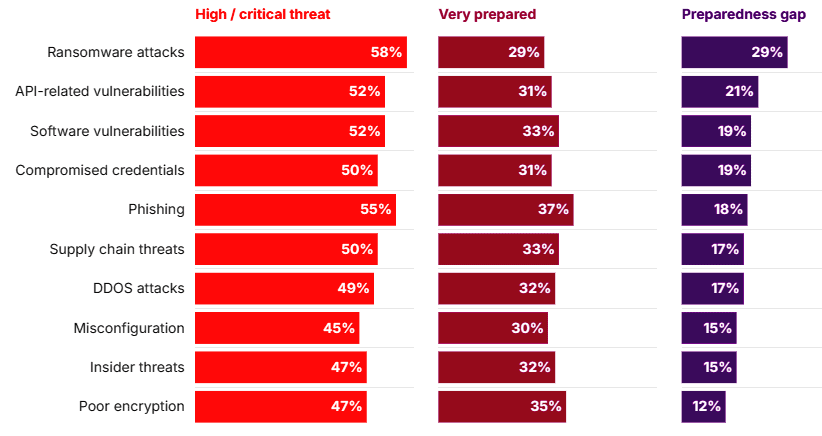The 2025 State of Cybersecurity Report: Paradigm Shift report has underscored ransomware as the most significant cybersecurity threat anticipated for 2025, with alarming insights that over 38% of security professionals believe AI will exacerbate its dangers.
The preparedness gap

Despite the looming threat, only 29% of security professionals express confidence in their organisation's readiness for ransomware attacks. This discrepancy highlights a critical gap in cybersecurity preparedness, emphasising the necessity for a more sophisticated approach that balances business risk and operational effectiveness.

“Exposure management is a tool to help organizations evaluate vulnerabilities and risks across a range of objectives—including business goals—to deliberately balance security and operations.” Daniel Spicer, CSO, Ivanti
Understanding exposure management
The concept of exposure management is gaining traction, with 49% of surveyed professionals indicating that their leaders have a strong grasp of its principles. However, only 22% are planning to increase investments in this area in 2025. Exposure management involves assessing and mitigating risks in a way that aligns with the organisation's overall risk appetite, rather than relying solely on traditional security measures.
Key findings
- Risk tolerance assessment: While 83% of security teams claim to have a documented framework for identifying risk tolerance, only 51% adhere closely to it. This lack of compliance can render such frameworks nearly ineffective, underscoring the need for practical implementation.
- Tech debt implications: A concerning one in three security professionals highlighted that technical debt is a serious concern, undermining security posture and stifling organisational growth. Notably, 37% reported an inability to maintain basic security practices due to this accumulated debt.
- Data slos: The report reveals that operational silos continue to plague organisations, leading to significant data blind spots. Approximately 62% of respondents stated that these silos slow security response times, while 53% noted a weakening of overall security posture.
The findings of Ivanti’s research call for organisations to adopt exposure management fully, dismantle operational silos, and address technical debt to enhance their security posture.
By fostering collaboration between security teams and business leaders, and implementing comprehensive risk management strategies, organisations can strengthen their resilience against cyber threats.
As the landscape evolves, a proactive approach to cybersecurity will be essential for maintaining a competitive edge in the market.



